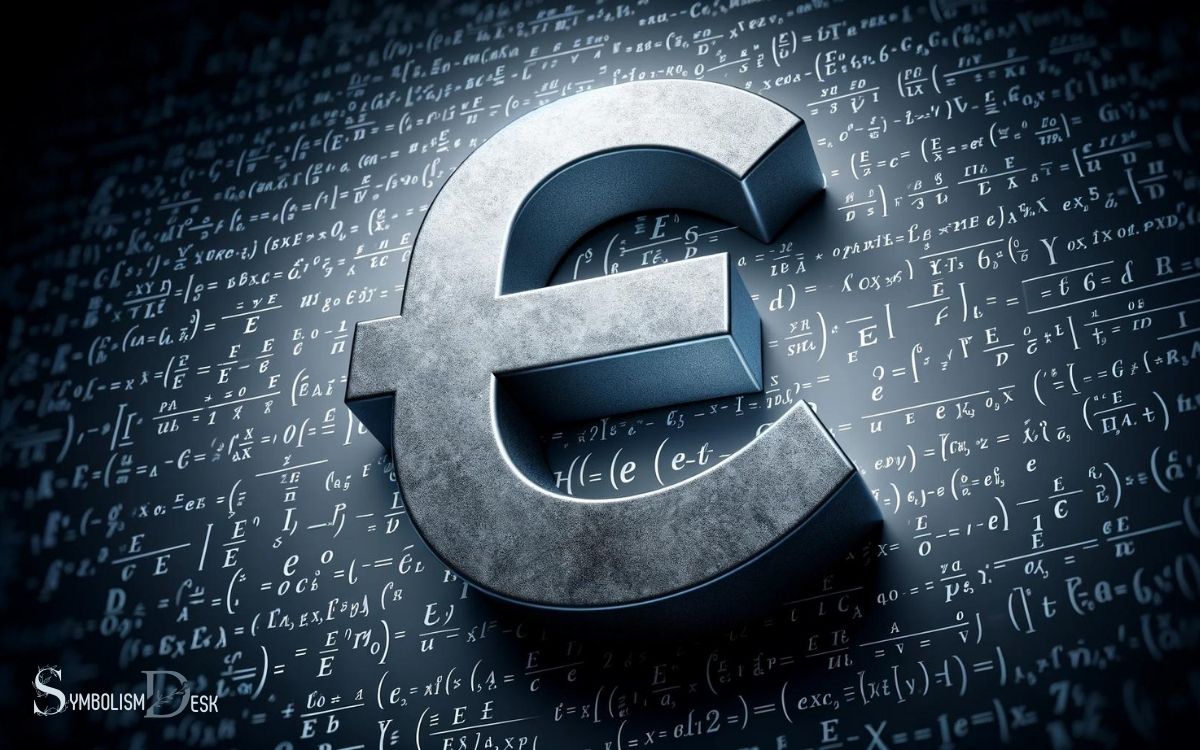What Is the E Symbol in Math? Euler’s Number!
The ‘e’ symbol in mathematics represents the base of the natural logarithm, approximately equal to 2.71828.
It’s an irrational and transcendental number, known as Euler’s number, with pervasive applications in calculus, complex analysis, and financial models, particularly in describing exponential growth and decay processes.
Euler’s number ‘e’ is a mathematical constant that is the limit of (1 + 1/n)^n as n approaches infinity.
It’s a key base for the natural logarithm because the derivative of e^x with respect to x is e^x, and the slope of its tangent at x=0 is 1. This makes ‘e’ a fundamental tool in the study of continuous growth and compounding processes.
Euler’s number ‘e’ is a cornerstone in mathematics, underpinning many equations that model continuous change and growth.

Key Takeaway
The Origin of ‘e’ in Math
The symbol ‘e’ in mathematics originates from the early 18th century, and it represents the base of the natural logarithm. The value of ‘e’ is approximately 2.71828 and is an irrational number, meaning it cannot be expressed as a simple fraction.
It was Swiss mathematician Leonhard Euler who first introduced this constant and used the letter ‘e’ to honor the Swiss mathematician Jacob Bernoulli, who originally discovered it.
The significance of ‘e’ extends beyond logarithms, finding applications in calculus, complex numbers, and various areas of science and engineering.
Understanding the origin of ‘e’ provides a foundation for comprehending its properties and characteristics, which play a crucial role in mathematical equations and models.
Properties and Characteristics of ’e
Originating from the natural logarithm, the constant ‘e’ possesses unique mathematical properties and characteristics that distinguish it as a fundamental element in various mathematical disciplines.
One of its key properties is its significance in calculus, where it serves as the base for exponential functions and their derivatives. ‘e’ is also the unique number such that the slope of the tangent line to the graph of y = e^x at the point (0,1) is exactly 1.
Furthermore, ‘e’ is an irrational number, meaning it cannot be expressed as a simple fraction, and its decimal representation is non-repeating.
These properties make ‘e’ essential in modeling natural phenomena and in various fields such as finance, physics, and engineering.
Understanding these characteristics is crucial for comprehending the widespread applications of ‘e’ in mathematics.
Applications of ‘e’ in Mathematics
With its significance in calculus and its role as the base for exponential functions, ‘e’ is widely utilized in various mathematical applications.
Its applications include:
- Continuous Growth: ‘e’ is used to model continuous growth, such as population growth, radioactive decay, and compound interest.
- Complex Numbers: Euler’s formula, which involves ‘e’, is fundamental in relating complex numbers to trigonometric functions.
- Probability: The exponential distribution, which involves ‘e’, is used to model the time between events in a Poisson process.
- Physics: ‘e’ is essential in equations describing phenomena such as wave motion, quantum mechanics, and electrical circuits.
- Statistics: ‘e’ is used in various statistical models, such as the exponential smoothing method for forecasting trends.
E’ in Calculus and Exponential Functions
In calculus and exponential functions, the utilization of ‘e’ permeates diverse mathematical applications, showcasing its foundational role in modeling continuous growth, complex numbers, probability, physics, and statistics.
In calculus, the number ‘e’ is the unique base for exponential functions, such as the natural exponential function f(x) = e^x, and it plays a crucial role in calculus through the derivative and integral of exponential functions.
Furthermore, ‘e’ is fundamental in the study of continuous compound interest and growth modeling. In physics and engineering, ‘e’ appears in various areas, including the description of waves, periodic phenomena, and solutions to differential equations.
Moreover, in statistics and probability, ‘e’ is integral in the development of probability distributions, such as the exponential distribution, and is fundamental in the study of random variables and their properties.
Understanding the Significance of ’e
The significance of ‘e’ lies in its foundational role across various mathematical disciplines, shaping the fundamental principles of continuous growth, probability, and physics.
- Continuous Growth: ‘e’ is the base of the natural logarithm, which is crucial for modeling continuous growth and decay phenomena, such as population growth and radioactive decay.
- Compound Interest: In finance, ‘e’ is used to calculate continuous compounding, which is essential for understanding interest accumulation over time.
- Probability: ‘e’ appears in the study of probability, particularly in the context of continuous probability distributions like the normal distribution.
- Physics: ‘e’ emerges in various physical phenomena, from describing the behavior of waves and oscillations to determining the relationship between an object’s mass and its energy.
- Complex Analysis: In complex analysis, ‘e’ plays a key role in Euler’s formula, connecting complex numbers, trigonometric functions, and exponential growth in a profound and elegant way.
Conclusion
The symbol ‘e’ in mathematics has a rich history and numerous applications in various fields. Its significance in calculus and exponential functions makes it a fundamental constant in the study of mathematics. The value of ‘e’ is approximately equal to 2. 71828 and is known as Euler’s number, named after the Swiss mathematician Leonhard Euler. The meaning of e shaped symbol in math is deeply rooted in the understanding and application of natural logarithms and continuous growth and decay processes. Furthermore, ‘e’ serves as the base for natural logarithms, which are essential in various fields such as finance, physics, and biology, particularly in modeling population growth and radioactive decay. Its unique properties allow mathematicians to solve complex equations and analyze dynamic systems effectively. In a creative twist, you can even explore ways to “write your name in symbols” using the principles of exponential growth, incorporating the elegance of ‘e’ into personal expressions of identity.
Understanding the properties and characteristics of ‘e’ allows for the exploration of its applications in a wide range of mathematical concepts. The symbol ‘e’ continues to play a crucial role in advancing mathematical understanding and applications.






